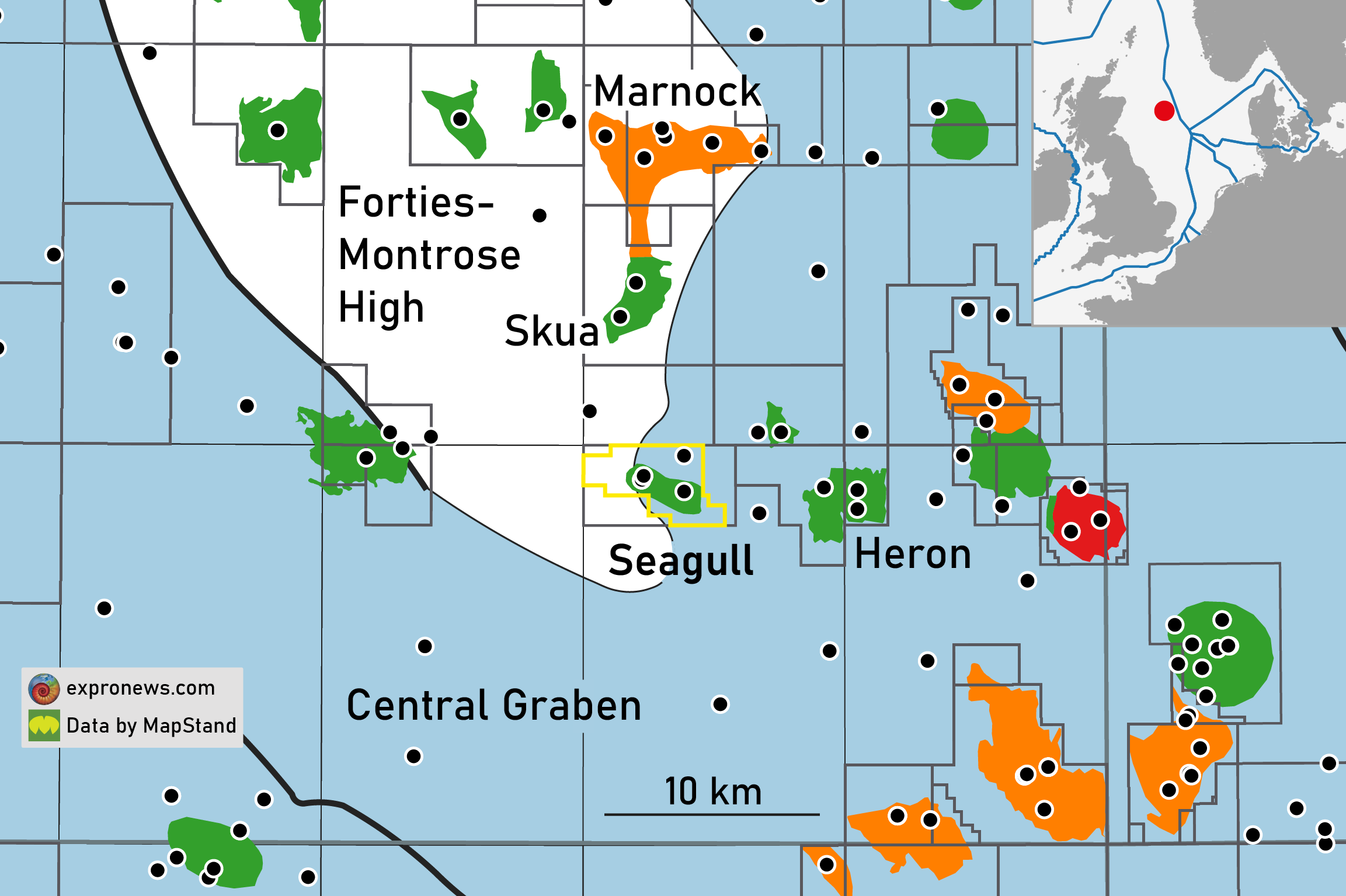The Seagull field has been around for quite some time. It was discovered in 1992 by Shell through drilling 22/29-2, and further appraised the same year (22/29-3). It was probably the fairly poor reservoir quality of the Triassic and Upper Jurassic sands that led Shell to release the licence until it was picked up again by Talisman Sinopec about two decades later. Another well was successfully drilled in 2014/15 (22/29-8Y), which must have been key in the decision to develop the field.
Let’s have a look at the interesting geology of the field, at the moment when operator Neptune (35%) and partners BP (50%) and Japex (15%) spudded the first of four development wells on the field that is estimated to contain about 50 MMboe of recoverable oil.

Pods and intra-pods
During the Triassic, a network of mini-basins (pods) developed in the area of the Seagull field (UK Central Graben) as a consequence differential loading and salt movement of the underlying Zechstein evaporites. With the Triassic being very thick in the pods, Jurassic sediments are preferentially being found in the areas in between (intra-pods) as a results of salt dissolution and salt wall collapse. However, as the Seagull field shows, Middle Jurassic Pentland sands and even some Upper Jurassic sediments can still be found on top of the more stable pods, suggesting that base level rose to such an extent that the top of the pods provided some accommodation space as well.
Anticline
The Seagull discovery well (22/29-2S1) was drilled onto an anticline at Base Cretaceous level, which is shown in the seismic section below. The transparent pod in the middle of the section below the Base Cretaceous are mostly the Triassic mudstones of the Smith Bank Formation, overlying a thin Zechstein interval.
22/29-2S1 found an oil column of 565 ft in Middle Jurassic Pentland Fm and Triassic Skagerrak sands, which was tested at 4,350 Bo/d. The subsequent 22/29-3 appraisal well encountered a similar stratigraphy, with the exception that a thin Upper Jurassic interval on top of the Pentland Fm was oil bearing too. The oil column in this well is 387 ft and was tested in the Upper Jurassic and Triassic at 1,279 and 841 Bo/d respectively.

Doubts about reservoir quality
In comparison with similar fields such as Heron and Marnock, the reservoir quality of the Triassic was found to be more degraded, partly due to abundant cemented fractures related to salt withdrawal. With initial studies also suggesting that the sands were part of the relatively poor lower Judy and Bunter sandstones, the field certainly didn’t rise on anyone’s development priority list.
A few years later though, according to the Shell relinquishment report, subsequent studies arrived at the conclusion that the Triassic reservoir did belong to the Upper Judy sand instead, which meant that reservoir quality should be much better. Still, an explanation for the water produced with the 22/29-3 DST was not presented.
Go ahead
After a long break, Apache drilled 22/29-8Y in 2014/2015 and found an impressive 672 ft of pay in what must have been the very crest of the field. This well tested at 8,700 Bo/d and 16 MMcfp/d, constrained by facilities. And now, six years after the announcement and the acquisition of Apache’s operating stake by Neptune, development drilling has started with the field projected to be on stream in 2022.
HENK KOMBRINK
Information about Seagull was kindly supplied by TROVE KnowledgeBases from 1st Subsurface.





